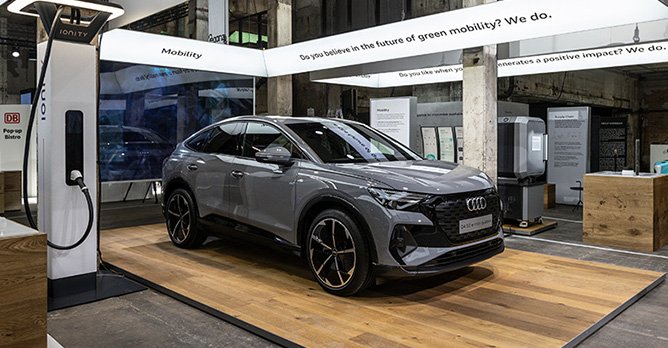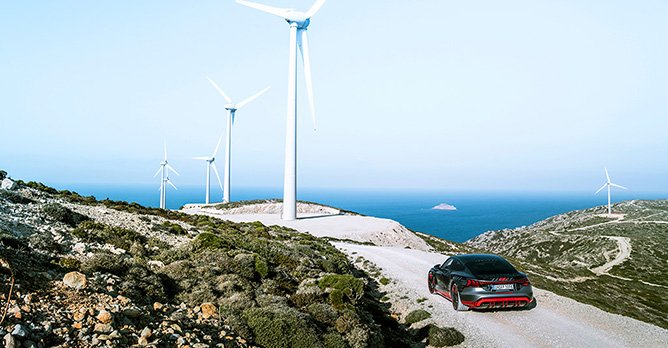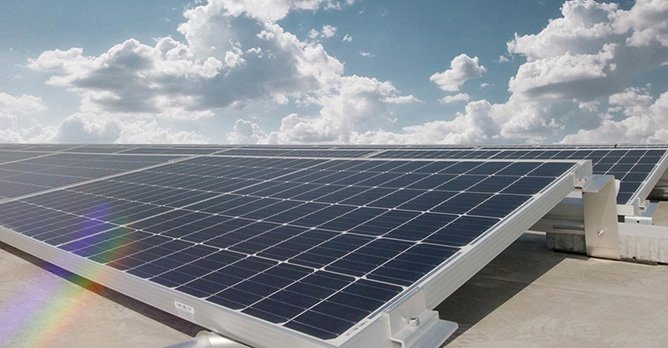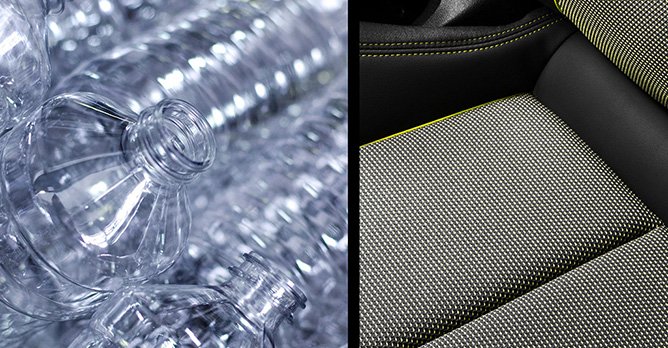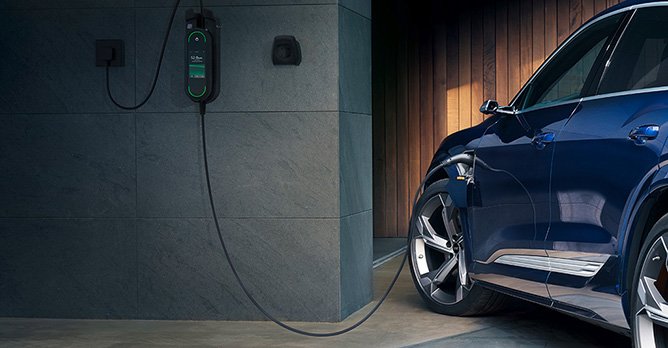Audi on the road to its environmental goals
30 Aug 2021|5,427 views
Audi has made sustainability a priority of the brand's plan for the next 30 years. The German luxury carmaker has announced that it wants to be a net-zero carbon emissions company by the year 2050.
In fact, the car manufacturer plans to phase out production of internal combustion engines by 2033. The production of Audi's final new combustion engine model will begin in four years' time. By 2025, there should be more than 20 fully-electric, battery-driven cars. As a result, Audi will only release models that are powered purely by electricity in 2026.
The process of perfection
And while all these are in sight, the company is simultaneously aiming to reduce the ecological footprint of its fleet by as much as 30%. This can be done by setting a goal of making production carbon neutral at all sites by 2025, which Audi has already achieved as an interim target at Audi Hungaria and Audi Brussels.
Of course, these goals that are set within timelines are a lot easier said than done. As Audi gear up to produce more electric vehicles, supply chain will likely become an even greater issue. Solution? Well, optimising every link in its value chain and committing itself to the expansion of renewable energy.
From the sourcing of raw materials and production itself to the utilisation phase and recycling or reuse at the end of a car's life cycle, the premium carmaker seems to have all its bases covered. Right from the onset, Audi has realised that a big portion of the total carbon emissions will be transferred to the supply chain through the transition to e-mobility. This applies to electric cars' lithium-ion batteries, which require particularly energy-intensive production.
For this, Audi has already started identifying steps to further reduce CO2 with its suppliers back in 2018. The German carmaker increased the use of secondary materials, applied materials from recycling processes in plastic components in its cars, and used green electricity.
As a result, in 2020 alone, Audi was able to save a total of over 335,000 tons of CO2 in its supply chain. That amounts to a reduction of 35,000 tons of CO2 released in comparison with 2019.
Recycling, reusing and reducing
Do all these recycling, reusing and reducing mean that the Audi cars are any lesser than before? Most definitely not. Just take a look at the Audi e-tron, the brand's first full-electric SUV. The battery cells in the car is produced with green electricity and that's where the expansion of renewable energy sources Audi's partners generate comes in. A solar park is now being developed in Germany and this plant will come on stream in 2022 and is designed for a total capacity of 170 million kilowatt hours. Encompassing nearly 420,000 solar panels, it will be one of the largest independent solar parks in Germany.
On the inside of the car such as the Audi e-tron GT, for instance, recycled materials are used in the insulation and damping materials. These include the floor covering and parts of the luggage compartment trim. The carpeting and floor mats are made from materials that consists of 100% recycled nylon fibres. They come from production waste, fabric and carpet scraps, or old fishing nets.
And when it comes to reduction, Audi plans to reduce freshwater consumption and cut water consumption per vehicle produced in half by 2035. According to the carmaker, its vision is to have closed water cycles at all of its production locations. Efficient processes, closed water loops and the amplified use of rain water are necessary for this goal to be obtained.
For instance, Audi Mexico has been waste water-free since 2018. A service water supply centre has been in use at the Ingolstadt site since 2019 as well. Together with the previous treatment system, roughly half of the waste water generated can be treated and processed for reuse.
What about the batteries?
For Audi's philosophy, there is life after life. Thanks to flexible container cubes that house charging pillars as well as used lithium-ion batteries for energy storage, the use of 2nd life modules from disassembled development vehicles is possible to give the battery cells a new, sustainable purpose.
According to Audi, the 2nd life philosophy initiates that components should only be recycled when they are broken. If they still work, but are not necessarily up to the demands of their original purpose anymore, then it is more ecological and conserves more resources to find an alternative - for instance as energy storage - than to recycle them prematurely.
Only when batteries can no longer fulfill their use of 2nd life are they dismantled in accordance with modern recycling concepts into their individual raw materials in order to be used again in new batteries. The Volkswagen Group's pilot recycling facility for lithium-ion batteries in Salzgitter, Germany, serves that very purpose.
Audi has made sustainability a priority of the brand's plan for the next 30 years. The German luxury carmaker has announced that it wants to be a net-zero carbon emissions company by the year 2050.
In fact, the car manufacturer plans to phase out production of internal combustion engines by 2033. The production of Audi's final new combustion engine model will begin in four years' time. By 2025, there should be more than 20 fully-electric, battery-driven cars. As a result, Audi will only release models that are powered purely by electricity in 2026.
The process of perfection
And while all these are in sight, the company is simultaneously aiming to reduce the ecological footprint of its fleet by as much as 30%. This can be done by setting a goal of making production carbon neutral at all sites by 2025, which Audi has already achieved as an interim target at Audi Hungaria and Audi Brussels.
Of course, these goals that are set within timelines are a lot easier said than done. As Audi gear up to produce more electric vehicles, supply chain will likely become an even greater issue. Solution? Well, optimising every link in its value chain and committing itself to the expansion of renewable energy.
From the sourcing of raw materials and production itself to the utilisation phase and recycling or reuse at the end of a car's life cycle, the premium carmaker seems to have all its bases covered. Right from the onset, Audi has realised that a big portion of the total carbon emissions will be transferred to the supply chain through the transition to e-mobility. This applies to electric cars' lithium-ion batteries, which require particularly energy-intensive production.
For this, Audi has already started identifying steps to further reduce CO2 with its suppliers back in 2018. The German carmaker increased the use of secondary materials, applied materials from recycling processes in plastic components in its cars, and used green electricity.
As a result, in 2020 alone, Audi was able to save a total of over 335,000 tons of CO2 in its supply chain. That amounts to a reduction of 35,000 tons of CO2 released in comparison with 2019.
Recycling, reusing and reducing
Do all these recycling, reusing and reducing mean that the Audi cars are any lesser than before? Most definitely not. Just take a look at the Audi e-tron, the brand's first full-electric SUV. The battery cells in the car is produced with green electricity and that's where the expansion of renewable energy sources Audi's partners generate comes in. A solar park is now being developed in Germany and this plant will come on stream in 2022 and is designed for a total capacity of 170 million kilowatt hours. Encompassing nearly 420,000 solar panels, it will be one of the largest independent solar parks in Germany.
On the inside of the car such as the Audi e-tron GT, for instance, recycled materials are used in the insulation and damping materials. These include the floor covering and parts of the luggage compartment trim. The carpeting and floor mats are made from materials that consists of 100% recycled nylon fibres. They come from production waste, fabric and carpet scraps, or old fishing nets.
And when it comes to reduction, Audi plans to reduce freshwater consumption and cut water consumption per vehicle produced in half by 2035. According to the carmaker, its vision is to have closed water cycles at all of its production locations. Efficient processes, closed water loops and the amplified use of rain water are necessary for this goal to be obtained.
For instance, Audi Mexico has been waste water-free since 2018. A service water supply centre has been in use at the Ingolstadt site since 2019 as well. Together with the previous treatment system, roughly half of the waste water generated can be treated and processed for reuse.
What about the batteries?
For Audi's philosophy, there is life after life. Thanks to flexible container cubes that house charging pillars as well as used lithium-ion batteries for energy storage, the use of 2nd life modules from disassembled development vehicles is possible to give the battery cells a new, sustainable purpose.
According to Audi, the 2nd life philosophy initiates that components should only be recycled when they are broken. If they still work, but are not necessarily up to the demands of their original purpose anymore, then it is more ecological and conserves more resources to find an alternative - for instance as energy storage - than to recycle them prematurely.
Only when batteries can no longer fulfill their use of 2nd life are they dismantled in accordance with modern recycling concepts into their individual raw materials in order to be used again in new batteries. The Volkswagen Group's pilot recycling facility for lithium-ion batteries in Salzgitter, Germany, serves that very purpose.
Thank You For Your Subscription.









